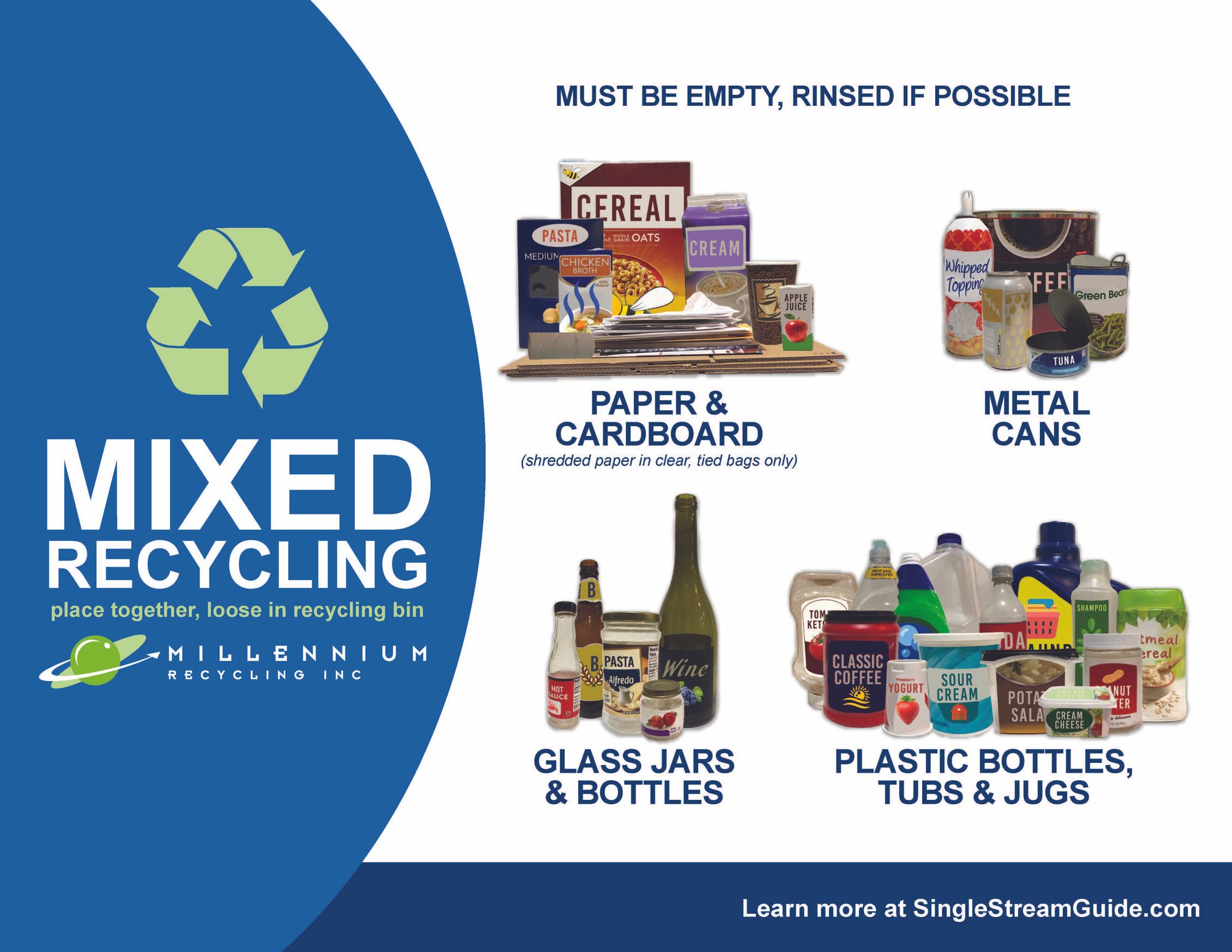This is a paid piece from Millennium Recycling.
Simplified: The mixed recycling facility in Sioux Falls has seen an increase in garbage and a decrease in recyclable material recently. While some of this may be from people not caring, oftentimes it’s from “wish-cycling” – or putting non-recyclable things in the bin and hoping they'll get re-used. In reality, those items ultimately end up in the landfill. Here's how you can help.
Why it matters
- Millennium Recycling’s residual rate has increased in recent years. The residual rate is the percentage of what's collected for recycling that ultimately can't be recycled and has to go to the landfill instead.
- The residual rate has historically hovered around 2 or 3 percent, but in the last year it has increased to 4 or 5 percent, President Shannon Dwire said. Even with the increase, it's well below the national average, but the upward trend is not good.
- And while recycling is considered a free service for consumers, the extra costs incurred by sorting out and transporting garbage will ultimately come back around.
"The cost gets spread to the whole community, so it affects everyone," Dwire said.
What are examples of 'wish-cycling'?
It's often done by people who are well-intended, Dwire said.
But it results in the recycling plant receiving items that can't be processed by its single-stream system.
These include things like:
- toys
- scrap metal
- pots, pans, knives, forks (other used kitchen items)
- clothing hangers
- garden hoses,
- furniture
- and clothes (recently, a wedding dress).
"There's this idea that people can put whatever they want in the bin and it will magically be taken care of," said Marissa Begley, communications and education director. "What they don’t understand is that when non-recyclable things get put in the bin, it still ends up in the landfill, while hurting small businesses along the way."
What's the consequence of 'wish-cycling'?
There are a few.
First, the items that can't be recycled usually end up in the landfill – and at a higher cost than if they'd just been thrown away to begin with.
- Millennium Recycling is left with the costs of labor for sorting out the garbage, as well as transportation costs to move the garbage to the dump.
Second, those extra costs make their way back to customers.
- Garbage haulers contract with Millennium to be able to drop off recyclables.
- If Millennium's costs increase, those increases are passed onto the haulers. And if haulers' costs increase, it'll show up on customers' garbage bills.
Third, items that could've been donated for re-use or recycled through proper channels end up in the landfill instead.
- Begley said sometimes they'll see used items like kitchen products, clothing or toys that could've had a second life somewhere else. And while Millennium tries to save what it can, ultimately many of these usable items are completely ruined from being crushed in the truck or contaminated by other material.
Ok, so how do I know if something can be recycled?
Millennium Recycling has a handy "yes" list that gives examples of all of the items you can place in your mixed recycling bin.
Here's a high-level breakdown of what can be recycled:
- Paper
- Cardboard and cartons
- Plastic bottles, tubs and jugs
- Metal cans (but no scrap metal)
- Glass jars and bottles
If you have specific questions that aren't answered by the yes list, just ask.
- Reach out on the Millennium Recycling website, their facebook page @SFRecycling, email info@millenniumrecycling.com, or call 605-336-1744.


